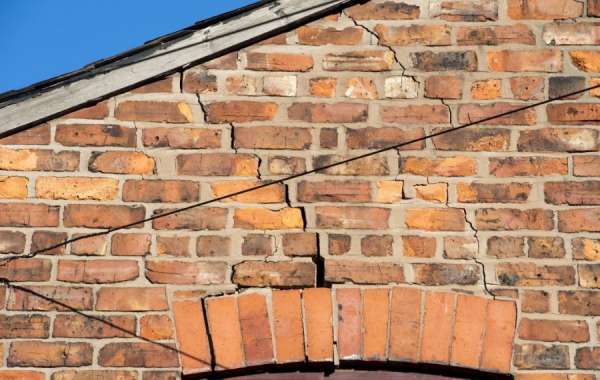Understanding Dilapidations Surveys
A dilapidations survey is an inspection conducted to assess the condition of a property at the end of a lease. The main goal of this survey is to determine whether the tenant has met their obligations as outlined in the lease agreement regarding property maintenance and repairs. The survey identifies any areas of disrepair, potential breaches of lease terms, and the associated costs for rectification.
Why Disputes Arise
Disputes between landlords and tenants often stem from misunderstandings regarding maintenance responsibilities. Tenants may believe they have met their obligations, while landlords may have different expectations. Common sources of conflict include:
- Ambiguities in Lease Agreements: Vague or unclear lease terms can lead to differing interpretations of a tenant’s responsibilities.
- Unrealistic Expectations: Landlords may expect the property to be returned in pristine condition, whereas tenants may argue that normal wear and tear should be considered.
- Unexpected Costs: Tenants may be blindsided by significant costs related to repairs they did not anticipate.
By conducting a dilapidations survey, both parties can address these issues proactively, ensuring a clear understanding of obligations and expectations.
How a Dilapidations Survey Reduces Disputes
1. Provides an Objective Assessment
One of the primary benefits of a dilapidations survey is that it offers an impartial evaluation of the property’s condition. A qualified surveyor inspects the premises and documents the findings, which serves as an objective record that both parties can rely on. This helps eliminate personal biases and misinterpretations.
2. Clarifies Responsibilities
A dilapidations survey clarifies what the tenant is responsible for at the end of the lease. By clearly outlining necessary repairs, the survey helps tenants understand their obligations and allows landlords to see where the tenant has complied or failed to meet the lease terms.
3. Facilitates Open Communication
The survey process encourages open communication between landlords and tenants. By discussing the survey findings, both parties can work together to resolve issues rather than relying on assumptions or accusations. This collaborative approach fosters a more amicable relationship.
4. Helps Avoid Legal Action
By providing a clear and detailed record of the property's condition, a dilapidations survey can reduce the likelihood of disputes escalating to legal action. When both parties have an agreed-upon document, it is easier to resolve disagreements without resorting to litigation.
The Dilapidations Survey Process
Understanding the process of conducting a dilapidations survey can help landlords and tenants prepare effectively:
1. Pre-Survey Preparation
Before the survey takes place, both parties should review the lease agreement to ensure they understand the terms and obligations. Tenants may also benefit from conducting their own pre-inspection to identify any areas of concern.
2. Conducting the Inspection
A qualified surveyor conducts the inspection, taking detailed notes and photographs of the property. The surveyor assesses various elements, such as structural integrity, aesthetics, and compliance with the lease terms. This thorough evaluation forms the basis of the final report.
3. Reporting Findings
Once the inspection is complete, the surveyor prepares a dilapidations report that outlines the property’s condition. The report includes a list of necessary repairs, estimated costs, and any breaches of lease terms identified during the inspection.
4. Discussion and Negotiation
Following the completion of the report, landlords and tenants should meet to discuss the findings. This stage is crucial for addressing any disagreements and negotiating responsibilities for repairs. Both parties should approach this discussion in good faith, aiming to reach a mutually agreeable solution.
Best Practices for Landlords and Tenants
To maximize the benefits of a dilapidations survey and minimize disputes, both landlords and tenants should follow these best practices:
For Landlords:
- Provide Clear Lease Terms: Ensure that lease agreements clearly outline maintenance responsibilities to avoid ambiguities.
- Conduct Regular Inspections: Schedule interim inspections during the lease term to identify issues early and keep tenants informed.
- Communicate Openly: Maintain open lines of communication with tenants regarding their responsibilities and any potential issues that arise.
For Tenants:
- Document Property Condition: At the beginning of the lease, document the property's condition with photographs and notes. This record can serve as a reference point during the dilapidations survey.
- Address Issues Promptly: If problems arise during the lease, address them quickly to prevent further deterioration and potential disputes.
- Seek Professional Advice: Consider hiring a surveyor to conduct an interim dilapidations survey if concerns arise during the lease term.
Conclusion: The Value of a Dilapidations Survey in Minimizing Disputes
In conclusion, a dilapidations survey is an invaluable tool for both landlords and tenants in commercial leasing. By providing an objective assessment of the property's condition, clarifying responsibilities, and facilitating open communication, these surveys play a critical role in minimizing disputes. With clear expectations and a collaborative approach, both parties can navigate the complexities of lease agreements more effectively, ensuring a smoother transition at the end of the lease term. Embracing the process of a dilapidations survey not only protects their respective interests but also fosters a positive landlord-tenant relationship.




